How to Use Google Search Console for SEO (PLUS: Get our GSC SEO Domination Checklist!)
By: Hayden Jarman

TL;DR for Busy Readers:
Crush your SEO game with these Google Search Console power moves:
- Verify ownership and submit your sitemap like a pro
- Leverage the Performance Report to skyrocket your rankings
- Obliterate 404 errors and fix page issues fast
- Boost your click-through rates using GSC's secret weapons
Let's dive in and master Google Search Console to take your SEO to the next level.
🚀 GSC SEO Domination Checklist 🔍
Let's start optimizing!
Table of Contents:
- Google Search Console: Your Secret Weapon for SEO Domination
- How to Get Your Site on Google's Radar: Submitting to Search Console
- Sitemaps: Your Roadmap to SEO Success
- Unleashing the Power of the Performance Report
- Crushing 404 Errors: Turn Dead Ends into Opportunities
- Crawling vs. Indexing: Know the Difference, Dominate the Game
- URL Inspection Tool: Your SEO Swiss Army Knife
- Troubleshooting Like a Boss: Fixing Page-Specific Issues
- Rich Results: Make Your Listings Pop
- Skyrocket Your Click-Through Rates with GSC Insights
- Additional Resources
1. Google Search Console: Your Secret Weapon for SEO Domination
Listen up, because this is going to change your SEO game forever.
Google Search Console (GSC) isn't just another tool – it's your nuclear option for crushing it in search results.
GSC is the direct line between you and Google's search engine. It's like having a backstage pass to how Google sees your site. We're talking impressions, clicks, average position – the whole nine yards.
But here's where it gets really juicy: GSC lets you submit sitemaps, check your index coverage, and spot technical SEO issues that could be holding you back. It's like having a team of SEO ninjas working around the clock to optimize your site.
And the best part? It's completely free. Google's basically handing you the keys to the kingdom. So if you're not using GSC, you're leaving money on the table. Plain and simple.
2. How to Get Your Site on Google's Radar: Submitting to Search Console
Alright, let's get your site hooked up to GSC.
Follow these steps and you'll be tapped into Google's mainframe in no time:
- Hit up Google Search Console and sign in with your Google account.
- Click that property selector dropdown and smash the "+ Add property" button.
- Choose your property type: URL-prefix (like https://yourdomain.com) or Domain (yourdomain.com).
- Time to prove you're the boss: verify ownership. You can use Google Analytics, add a DNS record, or upload an HTML file. Pick your poison.
- Once you're verified, it's sitemap time. Navigate to "Sitemaps" in the left menu and submit that bad boy (usually sitemap.xml).
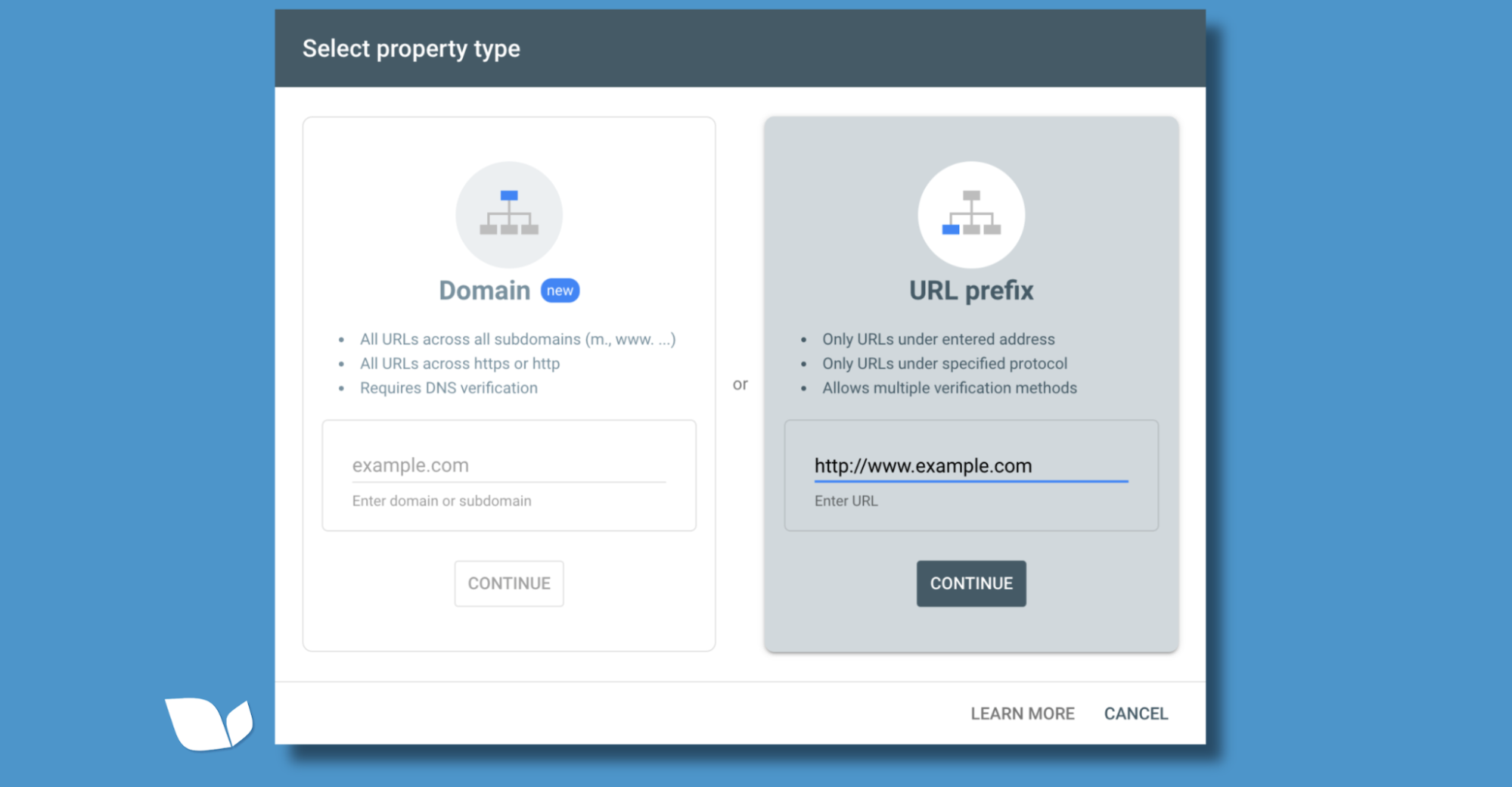
Boom. You're in. Now Google knows you mean business.
3. Sitemaps: Your Roadmap to SEO Success
Think of a sitemap as your site's GPS for Google.
It's an XML file that lays out all your URLs, telling Google what's what on your site.
Here's how to get your sitemap in Google's hands:
- Log into GSC like a boss.
- Pick your property.
- Find "Sitemaps" under "Indexing".
- Type in your sitemap URL (usually sitemap.xml) in the "Add a new sitemap" box.
- Hit "Submit" and watch the magic happen.
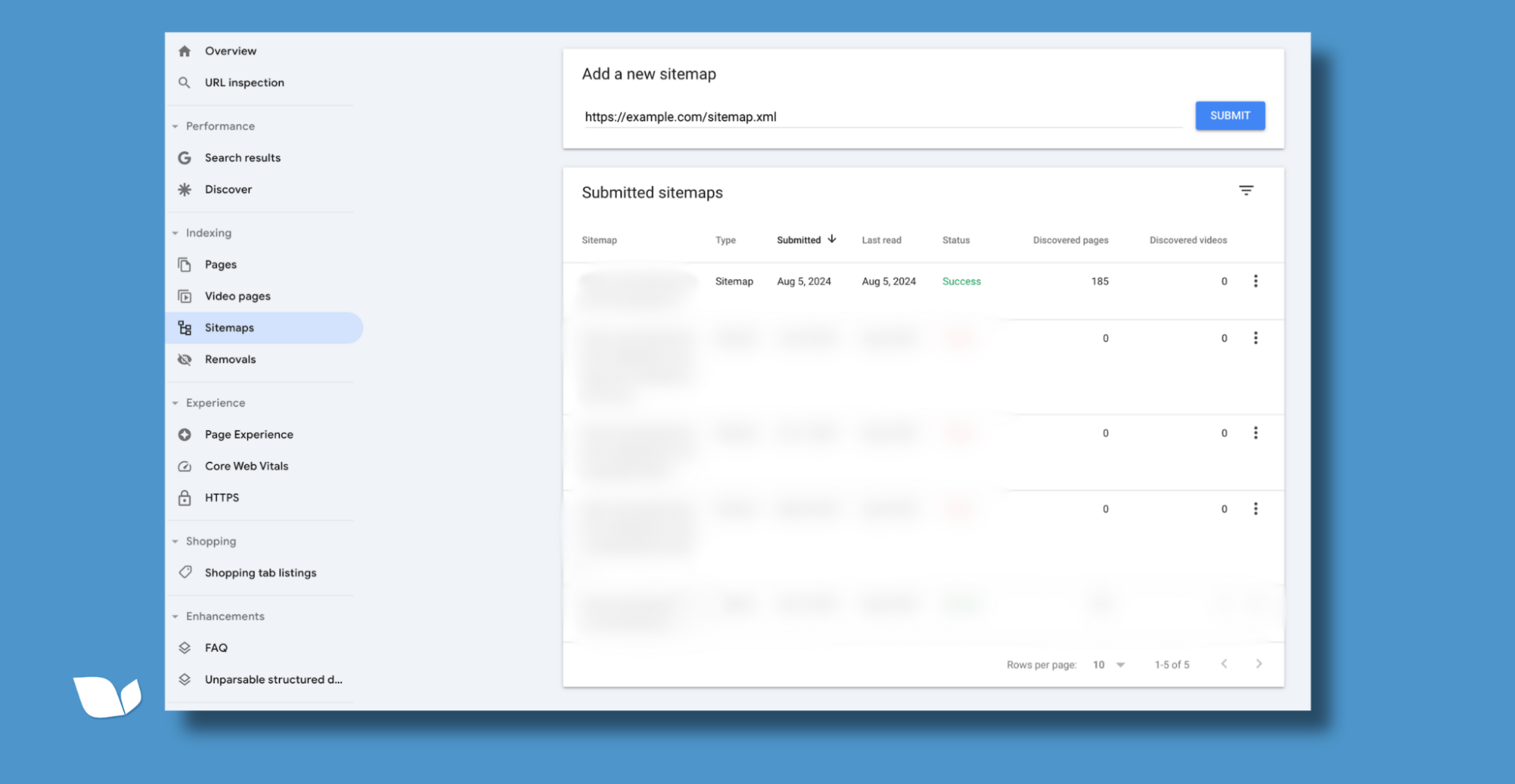
Remember, a good sitemap is like a good party – the more the merrier, up to 50,000 URLs or 50MB.
Got a massive site? Use a sitemap index file to break it down.
4. Unleashing the Power of the Performance Report
The Performance Report is where the rubber meets the road.
This is your goldmine of data on how your site's crushing it (or not) in search results.
Here's how to squeeze every drop of value out of this report:
- Identify Your Heavy Hitters: Find pages that are killing it with non-branded queries. These are your MVPs – replicate their success across your site.
- Target the Low-Hanging Fruit: Pages ranking 4-10 are your quick wins. Push them into the top 3 and watch your clicks quadruple.
- Optimize Your Click Magnets: Compare your CTRs to the benchmarks. Find underperforming pages and give their titles and descriptions a facelift.
- Mobile First, Always: Use the device breakdown to see if you're slacking on mobile. In 2024, if you're not mobile-first, you're last.
- Keyword Goldmine: Find those high-impression, low-click keywords. These are your hidden opportunities – create killer content around them and watch your traffic soar.
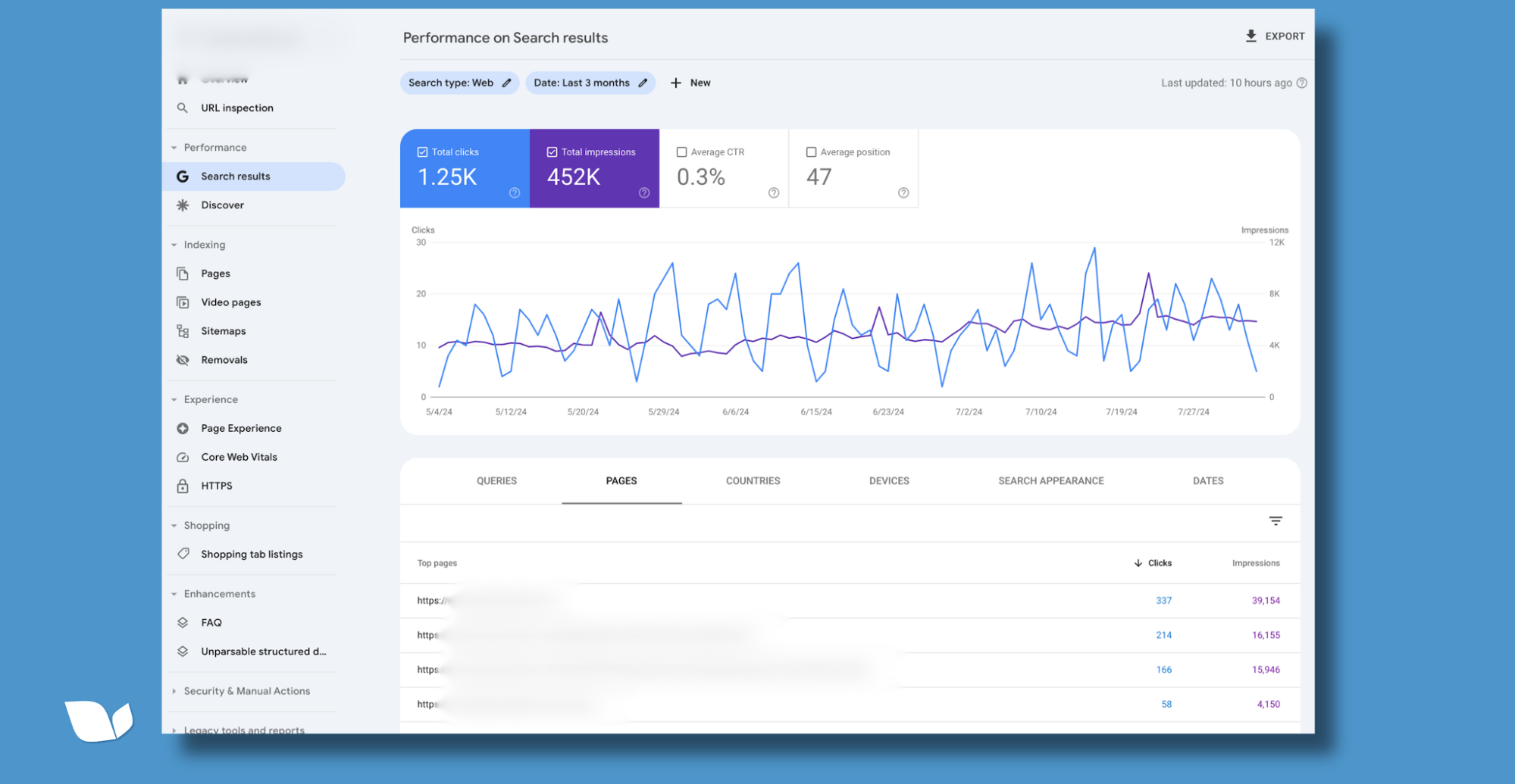
5. Crushing 404 Errors: Turn Dead Ends into Opportunities
404 errors are like kryptonite for your SEO.
But with GSC, you can turn these weaknesses into strengths.
Here's your battle plan:
- Identify the Culprits: Use GSC's Pages section to find where these 404s are coming from. Are they your fault or someone else's?
- Dive into Server Logs: Your server logs are like a black box recorder for your site. Use them to spot patterns in these 404 errors.
- Fix Your Internal Game: Got broken internal links? Fix 'em or nix 'em. Don't lead your visitors (or Google) down dead ends.
- Keep Your Sitemap Fresh: Your sitemap should be as up-to-date as your Instagram feed. Remove those dead URLs regularly.
- Leverage the URL Removal Tool: For those stubborn 404s that won't quit, use GSC's URL Removal Tool to kick them out of Google's index for good.
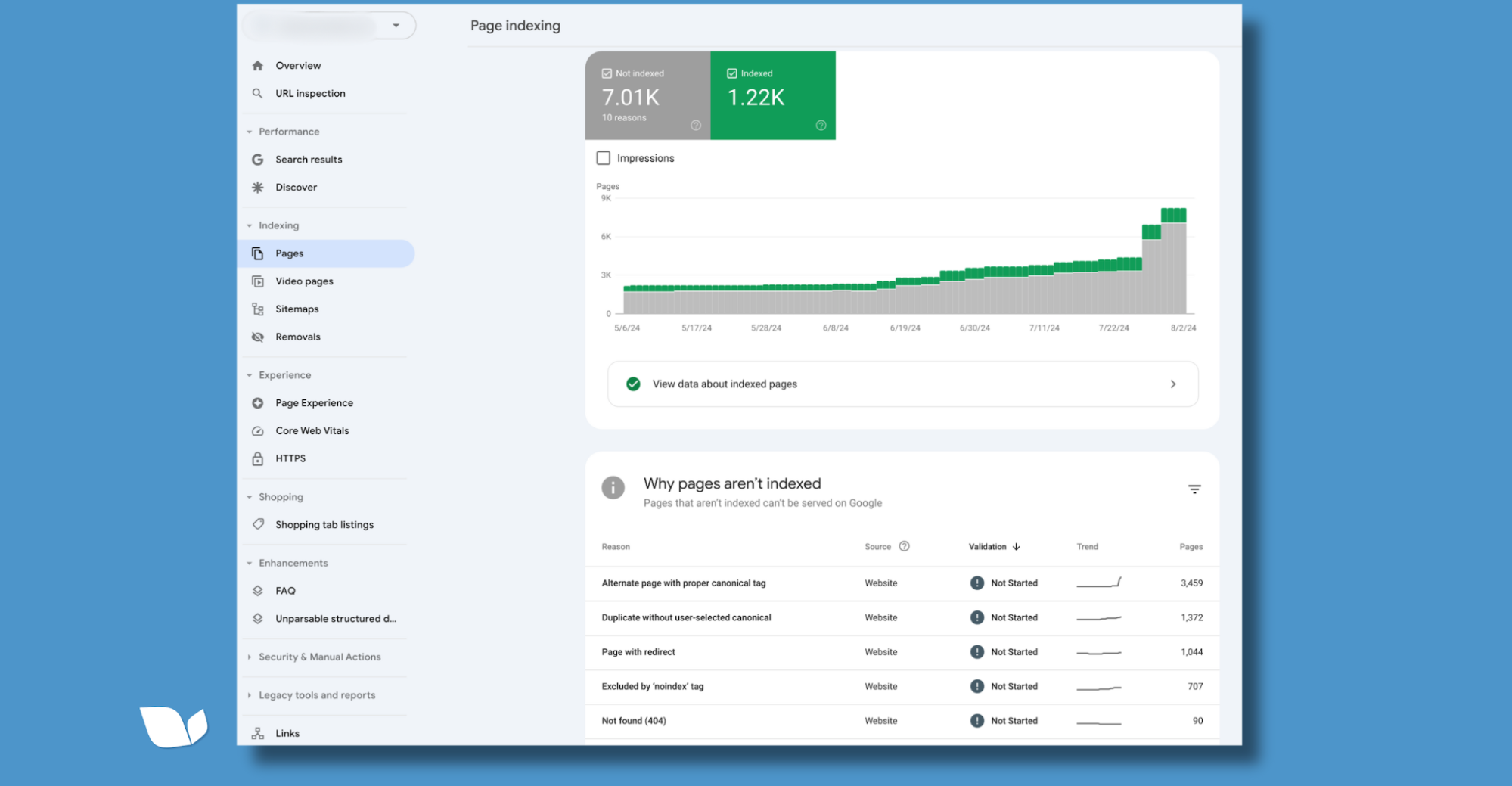
6. Crawling vs. Indexing: Know the Difference, Dominate the Game
Listen up, because this is crucial.
Crawling and indexing are not the same thing, and understanding the difference will give you a massive edge.
Crawling is like Google's spiders exploring your site, following links and discovering pages. It's the reconnaissance mission.
Indexing is what happens after. It's Google analyzing and storing those pages in its massive database, ready to serve them up in search results.
Here's the key: Just because Google crawled your page doesn't mean it's indexed. In GSC, use the URL Inspection tool to request crawling for specific URLs. Then, check the Coverage report to see what's actually made it into Google's index.
Master this, and you'll be lightyears ahead of your competition.
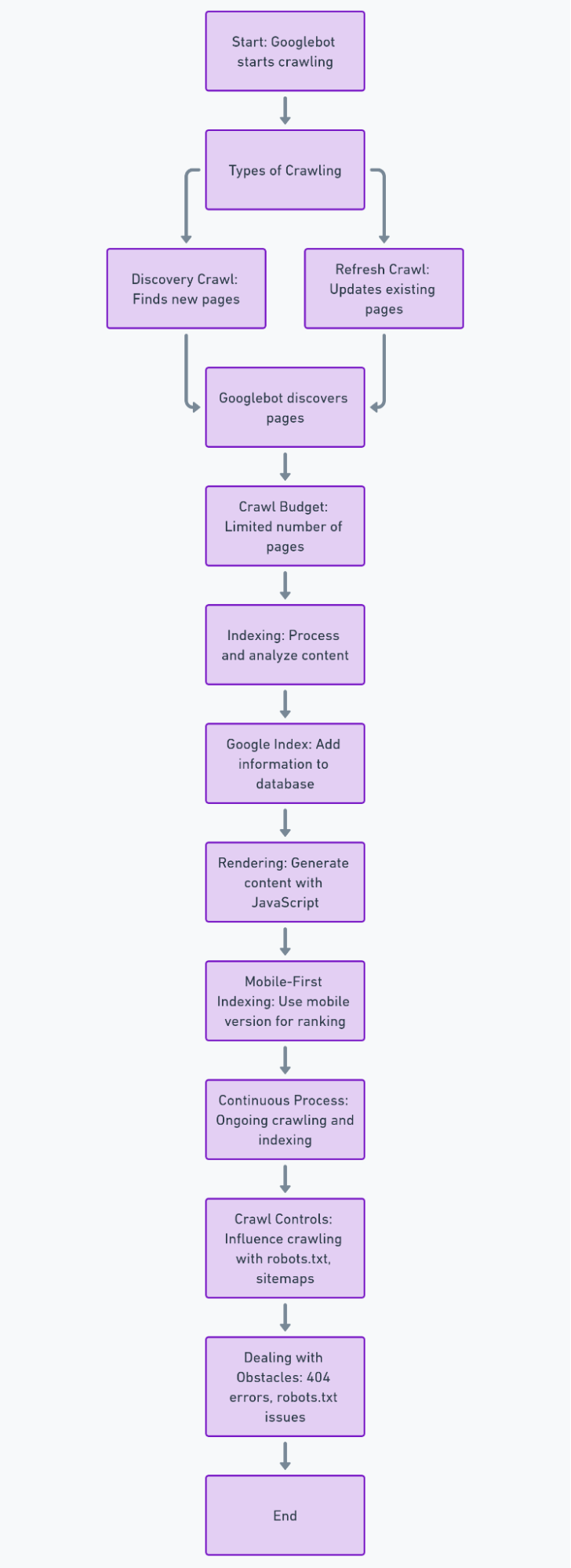
7. URL Inspection Tool: Your SEO Swiss Army Knife
The URL Inspection tool is like having X-ray vision for your pages.
Here's how to use it like a pro:
- Inspect the Indexed Version: See exactly what Google sees when it looks at your page. Structured data, AMP, videos – it's all here.
- Live URL Testing: Made some changes? Test the live version to make sure they're good to go.
- Request Indexing: Got a hot new page or just made some killer updates? Request indexing to get Google on it ASAP.
- See What Google Sees: View the rendered page as Googlebot sees it. This is crucial for JavaScript-heavy sites.
- Canonical Concerns: Make sure Google's picking up the right version of your pages. No more duplicate content headaches.
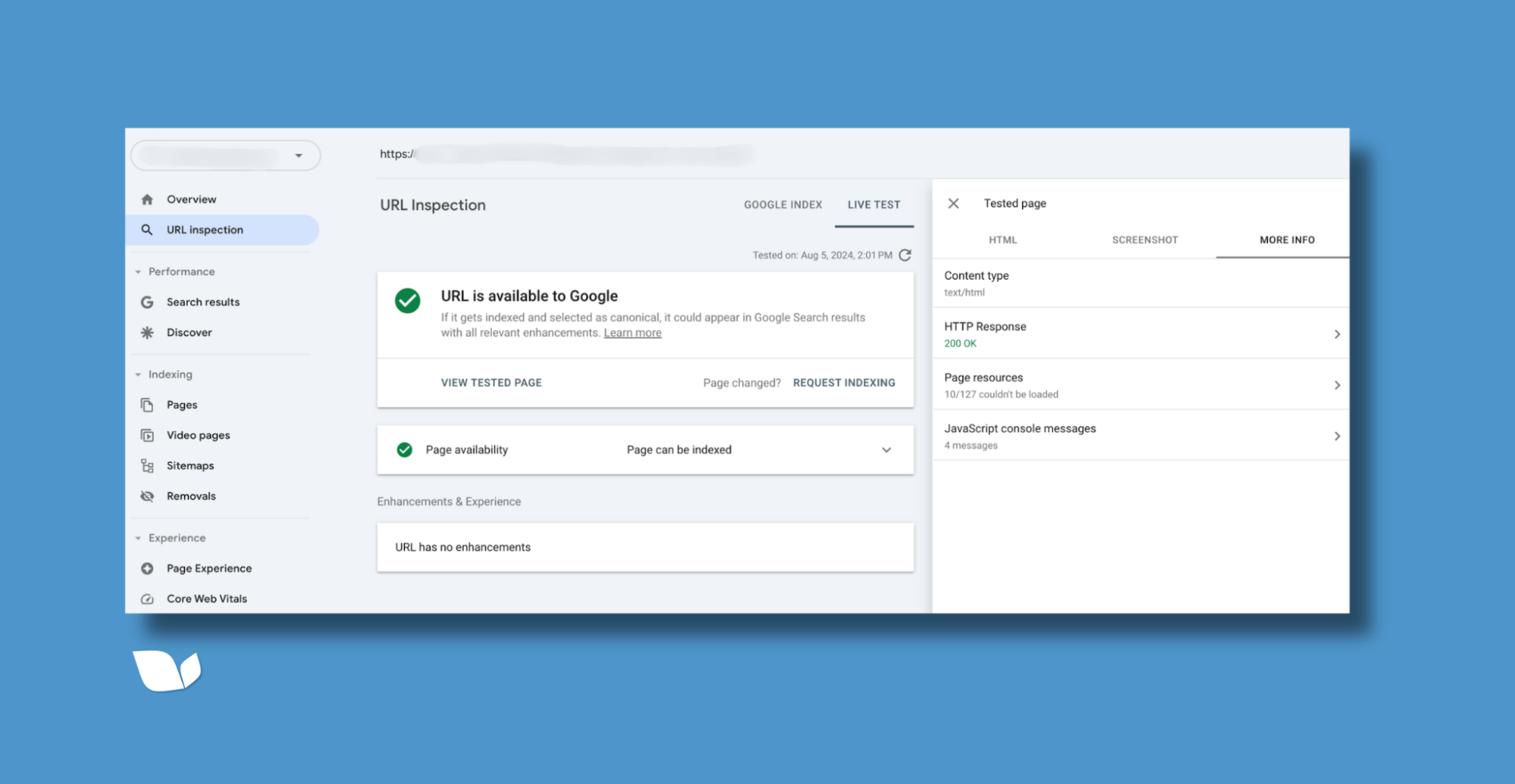
8. Troubleshooting Like a Boss: Fixing Page-Specific Issues
When a page is giving you trouble.
Here's how to diagnose and fix it fast:
- Inspect That URL: Use the URL Inspection tool to see if Google's even indexed it.
- Squash Those Errors: Server errors, redirect loops, robots.txt blocks – find 'em and fix 'em.
- Validate Your Fixes: Use the "Validate Fix" button in the Coverage report. Show Google you've solved the problem.
- Sitemap Check: Make sure your sitemap is up to date with all your latest and greatest pages.
- Request Indexing: For new or fixed pages, request indexing to get them in Google's good graces ASAP.
9. Rich Results: Make Your Listings Pop
Rich Results are your ticket to standing out in the search results.
We're talking images, ratings, FAQs – the works.
Here's how to check if you're nailing it:
- Hit up the "Enhancements" section in GSC.
- Pick your Rich Result type – Products, FAQs, whatever you're working with.
- Look for errors, warnings, and valid items. Fix the bad, optimize the good.
Pro tip: Use Google's Rich Results Test tool to preview how your pages will look in search results. It's like a dress rehearsal for your SEO performance.

10. Skyrocket Your Click-Through Rates with GSC Insights
Your click-through rate (CTR) is the difference between being invisible and being irresistible in search results.
Here's how to use GSC to pump those numbers up:
- Analyze Your Query Champions: Find the queries that are bringing in the clicks. Work those keywords into your titles and meta descriptions like a pro.
- Index Check: Use the URL Inspection tool to make sure all your pages are properly indexed. Can't click what they can't see.
- Rich Snippet Optimization: Use the Search Appearance report to fine-tune your structured data. Make those snippets pop.
- Speed Demons Only: Keep an eye on your Core Web Vitals. Faster pages get more clicks, period.
- Backlink Bonanza: Use the Links report to find high-authority sites linking to your competitors. Then go get those links for yourself.

Your Next Steps
Google Search Console isn't just a tool – it's your secret weapon for SEO domination.
By mastering its features, you're not just playing the SEO game – you're changing it.
Remember, SEO isn't a one-and-done deal. It's a constant grind. But with GSC in your arsenal, you've got the edge. Keep experimenting, keep optimizing, and watch your site climb those rankings.
Now get out there and crush it. Your competitors won't know what hit them.
Additional Resources
For more insights on leveraging Google Search Console for SEO, check out these expert resources:
-
Productive Blogging
Detailed guide on using Google Search Console to grow blog traffic.
-
SEO Notebook
Practical tips and strategies for using Google Search Console in SEO.
If you need further assistance in mastering Google Search Console or have any other SEO-related questions, reach out to
BlueTone Media.
Our team of SEO experts is ready to help you optimize your site and achieve your SEO goals.
Related Posts:
- Understanding Google’s Local Pack: How to Get Featured
- Google Business Profile FAQs: Everything You Need to Know
- The Best Google Ads Extensions to Boost Your Click-Through Rates
- How to Leverage Facebook Groups for Local Business Leads
- How to Use AI to Write Better Social Media Captions
- How to Optimize Google Reviews to Attract More Customers
- LinkedIn for B2B Marketing Success
- How to Conduct a Social Media Audit (w/ "Audit Readiness" Quiz!)
- Creating a Content Calendar for Consistent Posting
- The Importance of Mobile Optimization in 2024
- Data Privacy Regulations: What Marketers Need to Know
- The Role of Chatbots in Enhancing Customer Service
- SEO for Small Business: The Ultimate Guide to Getting Found Online
- The Role of Keyword Clustering in Modern SEO

